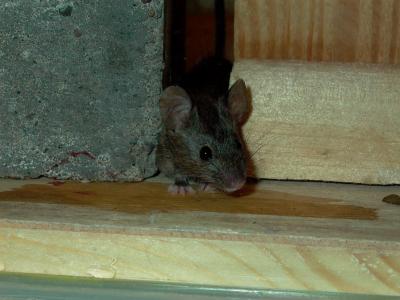MN Mice Control | Wild Animal Prevention
Fall is officially her. The summer has come to an end, the days are getting shorter and the weather is getting colder, and here in Minnesota, we are preparing for the almost guaranteed very cold, very snowy, and very long winter ahead. Chilly, Minnesota weather has a way of sneaking up on us. Have you noticed that the days are getting shorter. No? Well wild animals have, so maybe it’s time to plan for their arrival at your house ’cause winter … love it, hate it, or simply tolerate it, is on the way!
Guess Who’s Coming For The Winter?
And guess who’s coming for the winter? Mice and their four legged furry little pals also know that winter is coming, so they are getting prepared, looking for places to nest and raise their families that are protected from the cold winter temperatures. Ugh!
 Not only do they run like Olympic track stars, they are masters at climbing; being able to quickly scurry into wall corners and squeezing through tight spaces. Mice can squeeze through openings slightly larger than 1/4 inch across. They are also experts at staying hidden, so therefore, are rarely seen by the homeowner. The most obvious indicators of their presence are droppings (1/8 – 1/2-inches long, dark and pointed at both ends), sounds of them running, gnawing or squeaking, or damage to stored food or materials used for nesting.
Not only do they run like Olympic track stars, they are masters at climbing; being able to quickly scurry into wall corners and squeezing through tight spaces. Mice can squeeze through openings slightly larger than 1/4 inch across. They are also experts at staying hidden, so therefore, are rarely seen by the homeowner. The most obvious indicators of their presence are droppings (1/8 – 1/2-inches long, dark and pointed at both ends), sounds of them running, gnawing or squeaking, or damage to stored food or materials used for nesting.
Mice are prolific breeders, producing 6-10 litters continuously throughout the year. They might be residing, growing, and multiplying right under your nose already! As the weather cools down in October and November, our warm homes are just as enticing to them as they are to us.
Whether the invaders are as small as a teeny tiny ant or as big as a family of squirrels, raccoons, skunks or mice, all they need is a place to call “home sweet home”! One with plenty of food, a source of water, and a place to crash for the winter… er, maybe your place!
Once mice become established inside a home, they can be extremely challenging to get rid of. They will also be attracted to your winter food stash. And once they’re indoors, any food that isn’t securely stored is sure to be added to their menu.
Prevention
The best offense for all the seasonal invaders is a good defense that focuses on exclusion. Sealing access off is the way to start. Take the time to seal all cracks and crevices. Plug up all your holes and gaps. That means any obscured or unnoticed opening in siding, fascia boards, window frames and foundations that might be an open invitation to wild animals. It will save a lot of energy and prevent them from entering your home. If done diligently, it will save a LOT of problems in costly repairs later.
To prevent infestations of mice, homeowners can:
- Seal all holes and cracks in the foundation, siding and roof areas. Seal all pipe chases and wire conduits entering the house from outside. Wire mesh sealed with caulk or foam is an effective barrier as well.
- Repair leaks to remove sources of water.
- Install thick weather stripping on the bottoms of all exterior and garage doors.
- Clear away leaves and debris from around your foundation, trim back shrubbery and overhanging tree limbs.
- Store firewood and piles of brick, stones or construction supplies away from your home.
- Pick up fallen fruit from trees.
- Keep pet food and bird seed in well-sealed containers. Do not leave pet food out overnight.
- Store trash receptacles away from the house.
- Remove bird feeders outside.
But sometimes these exclusion methods are not enough so many of our customers choose an ongoing protection plan to help guard against future mice infestations in the future.
While they all might be as cute as a button leaping, hopping and scurrying around in your back yard… in our homes… not so much! Mice can spread diseases like salmonella and hantavirus when they contaminate food. Rodents can also bring other pests like fleas, ticks and lice indoors and can also cause damage to a home by chewing through wood and electrical wiring. They are just plain yucky!
So, while you’re getting your house ready for a change in the season, contact a Wild Animal Management Expert to make sure it’s wild life-proofed as well.




